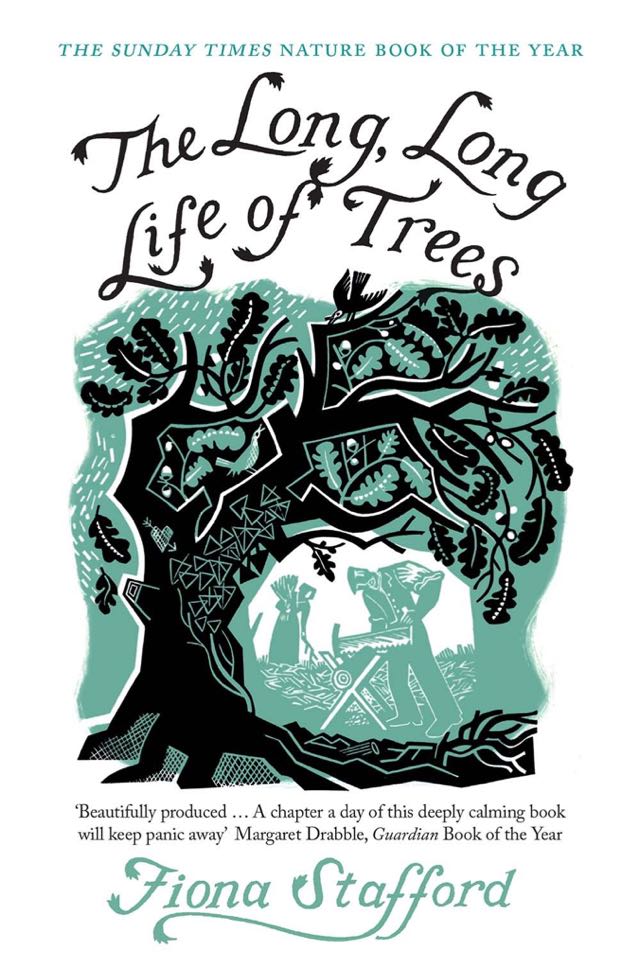The Long, Long Life of Trees
— Yael van der Wouden
I picked up this book a few weeks back, on a weekend to the south of this little toenail of a country (the Netherlands). It was tucked away somewhere between a book on Irish landscapes and Scottish gardens, and I immediately cancelled the rest of my plans for that weekend.
I once graduated with a massive monster of a work on the cultural history of trees in the Middle East. And so this book—[a] lyrical tribute to the rich diversity of trees,
as the blurb says—represented what I used to live and breathe during those last years at uni. I went into this with a good portion of nostalgia and familiarity and, I’ll be honest, a pinch of scepticism in terms of—how much could it teach me? I remember a time, toward the end of my thesis, when I felt as though I’d fully exhausted the world of cultural landscape history and was only reading the same information on repeat. I was weary of opening this treasure box and finding nothing new.

Now if you’re wondering at this point whether I was made to re-evaluate my own sense of grandiosity upon reading: of course the answer is yes. Of course it is! Turns out, Fiona Stafford has written a work that will easily fascinate and educate both old hats and newcomers to the world of tree history. She has that light touch of an author who knows, seemingly instinctively, how to blend complex historical analysis with literary interpretation. The chapters are succinct, each one briefly expanding on the botanical and cultural history of one specific tree species: the yew, for example, or the rowan, the olive, the elm. What makes this work so appealing, in the end, is how the trees become a vehicle in discussing a very human history, a history where we have always tried to understand (if not control) the nature surrounding us. It’s a history where that tendency toward control neatly parallels our own fears and affections, a highlighting of all that’s always been important to us. To make this vague sentence a little more concrete:
In the chapter on the rowan, Stafford zooms in on superstitions surrounding the tree: how it was seen as a liminal piece of nature, a plant that had the power of keeping bad spirits in the spirit world. This protective power
of the rowan was used to guard all that was precious in a household: the elderly of the family were given walking sticks made of rowan wood, small sailboats were built from it, milk was stirred with it, and—in order to prevent witches from stealing milk from cow’s udders—a twig of rowan was hung above the byre with red thread. For the babes, red rowanberries were used to sow together a necklace: ward off that same witch who, it seems, upon not getting her milk, had turned the hunt for changelings.
It is easy enough for outsiders to smile at the beliefs surrounding rowan trees and mock them as old wives’ tales,
Stafford writes, but trees can tell us things if we are prepared to listen.
That is, suspicions about thefts of milk from inside the cow’s udder are, after all, not so different from worrying about having petrol syphoned out of the car overnight, or finding that the satnav has been stolen.
There is, after all, nothing new about the fear of nasty neighbours, or the faint sense of hidden malevolence lurking behind faces we see every day and yet do not really know.
And therein lies the power of Stafford’s work: her loving storytelling in and around trees becomes a fascinating analysis of the anxious human condition, a collection of mirrors to be held up to each of us in private, under the shade of our tree of choice.
Here, a handful of my favourite things I found out while reading this book:
Yews were associated with death not only because they’re planted in cemeteries and are poisonous: they were planted in cemeteries (and are therefore associated with death) because they are poisonous: to keep wandering cattle off holy ground.
Anyplace that has
derry
in its name, has been named after an oak: the Irish word for oak is Doire, or derw.Young women in search of love would, in old times, tuck an ash leaf into their cleavage in the hope that the magic of the tree would nudge fate in the right direction.
There were no willows in Britain until the 18th century.
Holly as we know it today was also around, just as pretty, as dark green with its bright berries, in the times of the dinosaurs.
A bundle of birch rods bound together as a grip for an axe makes the fasces: a symbol of power, also the root of the word ‘fascism.’ It was used as an icon for the enforcement of justice during ancient Roman times and today, still: above the door into the Oval Office.
In the summer of 1889, when van Gogh was committed to the Saint Remy asylum, he reflected on the many cypresses that dotted the hilly south of France. In a letter to his brother Theo he wrote,
the tree is a dark patch in a sun-drenched landscape.
And yet, within that landscape, it isthe most interesting dark notes.
Best read: in bed, right before a walk, right after a walk. Any season will do.